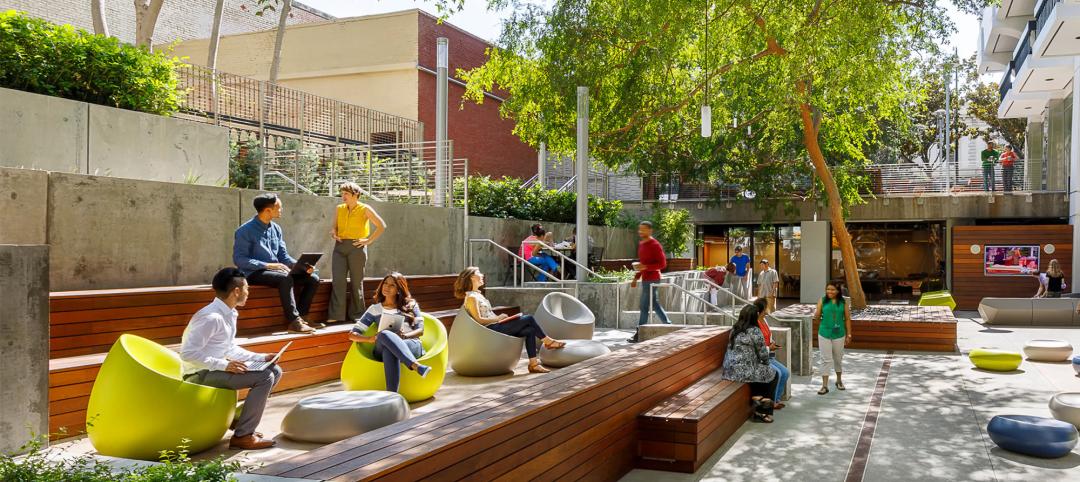Lightning Alley is not just a catchy name for a street or the local bowling lanes. It's the name dubbed to a notorious region in central Florida that is in the heart of the most lightning-prone area in the entire country. And that lightning strike may come at the most inopportune time.
Not only can this force of nature cause bodily injury and severe damage to property, it also has the power to disrupt or destroy a police department's 9-1-1 communications system, which is intended to assist residents during an emergency. That's exactly what happened in the middle of one Florida storm.
When a Walmart in the city of Bushnell was relocated, the facility was donated to the county for their use. The Sumter County Sheriff's Department decided to open its new offices in this building, including housing its emergency communications there.
One serious problem was that the electrical system was built for a 1970's vintage department store, not a critical communications and public safety facility. During one lightning storm in particular, the 9-1-1 system failed, leaving county residents without police, fire or ambulance response.
Inspection of the existing electrical system showed that it was badly flawed, mainly due to improper connectors and poor bonding and grounding. The communications tower, for example, had its own independent and inadequate grounding. The emergency generators and building structure were all independently grounded, each with its own ground rod, exposing its poor design. The main grounding electrode consisted of a single galvanized steel rod from the 1970s, with very high resistance to earth.
A new system was designed and installed for under $40,000, a minimal cost considering the value of the equipment protected, and improved public safety it brought to the residents of Sumter County.
"To be effective, the entire grounding system needs to be properly designed, using listed connectors and corrosion resistant materials," said Dave Brender, National Program Manager for the Copper Development Association, CDA. "Lightning protection systems in particular must be well-grounded to work properly, and could make matters worse if they are not. Copper and its alloys are the most common materials in use for this application because they provide superior corrosion resistance and avoid oxidation problems at connections.
Copper is also easy to install and durable," Brender added.
Central Florida is not the only region in the U.S. affected by severe weather. Similar 9-1-1 and broadcast facilities are employed in areas all over the country where communications is critical and the chances for lightning strikes are quite high. Having proper copper-based grounding and bonding should be a top priority where an entire system can get crippled by lightning.
Related Stories
Codes and Standards | Apr 8, 2024
Boston’s plans to hold back rising seawater stall amid real estate slowdown
Boston has placed significant aspects of its plan to protect the city from rising sea levels on the actions of private developers. Amid a post-Covid commercial development slump, though, efforts to build protective infrastructure have stalled.
Retail Centers | Apr 4, 2024
Retail design trends: Consumers are looking for wellness in where they shop
Consumers are making lifestyle choices with wellness in mind, which ignites in them a feeling of purpose and a sense of motivation. That’s the conclusion that the architecture and design firm MG2 draws from a survey of 1,182 U.S. adult consumers the firm conducted last December about retail design and what consumers want in healthier shopping experiences.
Healthcare Facilities | Apr 3, 2024
Foster + Partners, CannonDesign unveil design for Mayo Clinic campus expansion
A redesign of the Mayo Clinic’s downtown campus in Rochester, Minn., centers around two new clinical high-rise buildings. The two nine-story structures will reach a height of 221 feet, with the potential to expand to 420 feet.
K-12 Schools | Apr 1, 2024
High school includes YMCA to share facilities and connect with the broader community
In Omaha, Neb., a public high school and a YMCA come together in one facility, connecting the school with the broader community. The 285,000-sf Westview High School, programmed and designed by the team of Perkins&Will and architect of record BCDM Architects, has its own athletic facilities but shares a pool, weight room, and more with the 30,000-sf YMCA.
Market Data | Apr 1, 2024
Nonresidential construction spending dips 1.0% in February, reaches $1.179 trillion
National nonresidential construction spending declined 1.0% in February, according to an Associated Builders and Contractors analysis of data published today by the U.S. Census Bureau. On a seasonally adjusted annualized basis, nonresidential spending totaled $1.179 trillion.
Affordable Housing | Apr 1, 2024
Biden Administration considers ways to influence local housing regulations
The Biden Administration is considering how to spur more affordable housing construction with strategies to influence reform of local housing regulations.
Affordable Housing | Apr 1, 2024
Chicago voters nix ‘mansion tax’ to fund efforts to reduce homelessness
Chicago voters in March rejected a proposed “mansion tax” that would have funded efforts to reduce homelessness in the city.
Standards | Apr 1, 2024
New technical bulletin covers window opening control devices
A new technical bulletin clarifies the definition of a window opening control device (WOCD) to promote greater understanding of the role of WOCDs and provide an understanding of a WOCD’s function.
Office Buildings | Mar 28, 2024
Workplace campus design philosophy: People are the new amenity
Nick Arambarri, AIA, LEED AP BD+C, NCARB, Director of Commercial, LPA, underscores the value of providing rich, human-focused environments for the return-to-office workforce.
Office Buildings | Mar 27, 2024
A new Singapore office campus inaugurates the Jurong Innovation District, a business park located in a tropical rainforest
Surbana Jurong, an urban, infrastructure and managed services consulting firm, recently opened its new headquarters in Singapore. Surbana Jurong Campus inaugurates the Jurong Innovation District, a business park set in a tropical rainforest.

















